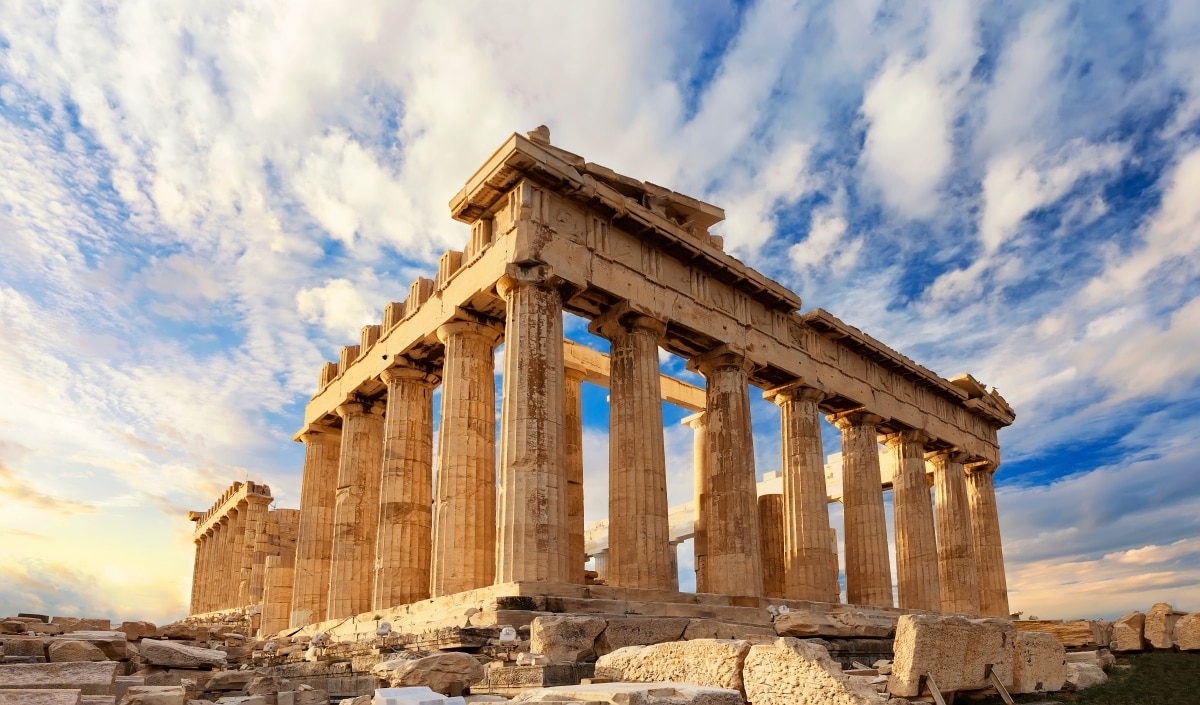The Palace of Aigai, the ‘Parthenon of Macedonia,’ has reclaimed its ancient glory after a 16-year reconstruction, offering a unique window into the pivotal moments of Macedonian history. Here’s the full story.
The Palace of Aigai Unveiled
The Palace of Aigai, an emblem of ancient Macedonia’s grandeur, has recently emerged from 2,170 years of ruin. This colossal structure, three times larger than the Parthenon, played a pivotal role in history, witnessing the murder of King Philip II and the proclamation of Alexander the Great as king in 336 BC.
It has just emerged from a colossal 16 year reconstruction project, which has drawn thousands of people to witness the revival of an architectural marvel, located near Thessaloniki.
The grand peristyle, a columned courtyard encircling the banqueting halls, was witness to the moment when the 20-year-old Alexander the Great ascended to the throne, following the murder of his father in the same location, which forever changed the course of history.
That history has led us to this week when, for the first time since it was destroyed by the all conquering Romans, the Palace has been restored and reopened for thousands of visitors to see.
A Journey Through History
Angeliki Kottaridi, the archaeologist supervising the €20.3m (£17.5m) EU-funded project, reflected on the monumental challenge of the restoration: “When we began, what we confronted were tens of thousands of scattered architectural remains—a huge jigsaw puzzle of column bases and capitals, architraves, roof tile fragments, and walls.
To envision how it would have looked, then to piece it together and have that verified, was pure joy.”
The Palace of Aigai, a testament to the vision of King Philip II, father of Alexander the Great, was more than a regal residence. Kottaridi emphasizes its role as “an architectural manifesto of the ideal state.” Under Philip’s ambitious building program, Aigai evolved into a sprawling city, complete with a theater, sanctuary, library, and a vast necropolis.
Only a fraction of the city has been excavated, revealing the palace as the jewel in a crown, the majority of which is still mostly undiscovered. Kottaridi, an archaeologist with nearly half a century of experience at the UNESCO world heritage site, expressed childlike wonder at the concept, stating, “Less than 10% [of the city] has been excavated. It is a gift that keeps on giving.”
A Cultural Catalyst
The reopening of the Palace of Aigai resonates beyond the borders of Greece. Prime Minister Kyriakos Mitsotakis underlined the monument’s cultural and historical significance, stating, “The importance of such monuments transcends local boundaries.”
The site, part of a broader initiative with the goal of upgrading over 800 monuments with EU assistance, is seen as a catalyst for regional growth, reinforcing Greece’s connection with ancient Macedonia.
Local officials herald the restored palace as the “Parthenon of Macedonia.” Konstantinos Vorgiazides, the mayor of Veria, anticipated a surge in tourism to the newly restored monument. Vorgiazides stated, “Every year the site draws about 250,000 tourists but now we are expecting it to increase greatly. We’re very proud. I was there for the inauguration. It’s a beautiful place.”
For historians like Michael Wood, the Palace of Aigai redirects attention from the classical age of Athens to the Macedonian dynasty. Wood noted, “History is always about what we focus on, and this focuses our attention on the incredible events that began there.
This small, provincial, militaristic kingdom would be the catalyst for the spread of Greek culture and Aigai the launch pad for Alexander the Great’s adventure in history, his expedition to Asia and conquest of half the known world.”
Lessons for the World
The reconstruction of the Palace of Aigai has led to an outpouring of support regarding the integrity of historical monuments. Michael Wood draws parallels with the Parthenon marbles, emphasizing “The modern Greek state, as it should be, is proving to be a pre-eminent guardian of its ancient Greek culture.
What the palace also does is draw attention to the fact that the fifth-century sculptures should all be in the same place, back in Athens.” For now, the palace stands as a testament to Greece’s role as a guardian of its rich cultural heritage, inviting contemplation on the reunification of artifacts in their place of origin.
Whether the unveiling of this new historical marvel will lead to any significant change on that tempestuous topic that remains to be seen.
The post The Past Resurrected as Aigai’s Palace Unveiled After 16-Year Restoration first appeared on Edge Media.
Featured Image Credit: Shutterstock / Preto Perola.
Grant Gallacher is a seasoned writer with expertise in politics and impactful daily news. His work, deeply rooted in addressing issues that resonate with a wide audience, showcases an unwavering commitment to bringing forth the stories that matter. He is also known for satirical writing and stand up comedy.

